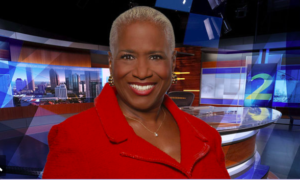I grew up on the west side of Atlanta in one of the roughest neighborhoods in the city.
I attended predominantly black, inner-city Atlanta public schools, where walking through a metal detector for entrance was mandatory. Throughout my childhood, I witnessed drug addictions, teen pregnancies and extreme poverty, none of which were ever shocking to me.
Despite whatever assumptions may be made from those raw facts about my upbringing or family life, I came from a very loving home. My parents were financially stable, though neither of them attended a traditional four-year university. My mom works in social media and marketing for Georgia Power, the local electric company; and my dad is a small business investor and property developer. Our home wasn’t broken by any means.
Major media outlets routinely present a distorted picture of communities of color. The narrative that has been created around communities similar to the one I grew up in is one of gang violence and drug crimes — written, told and oversold by aging white men who have had a strong presence in the newsroom for decades now.

Monica Kaufman Pearson was Atlanta’s first woman and first minority to anchor a daily 6 p.m. newscast. (Photo courtesy WSB-TV Atlanta)
This is an observation I made from a young age, as I had one black role model growing up on my local news station: Monica Kaufman Pearson. I vividly remember thinking I wanted to be just like her when I grew up. I also wanted other little black girls to see a face similar to theirs on screen.
In light of Kevin Steincross’s “slip-up” with his on-air racial slur during an early morning broadcast at KTVI St. Louis, I revisited this idea of why I’ve dedicated myself to being the change I wanted to see in the newsrooms. The people who have been allowed to construct this negative narrative about communities of color are out of touch with the people who have suffered generational trauma as a result of the color of their skin. The clear lack of respect for people of color that continues to infiltrate our airwaves is appalling.
To comfortably mistake King’s last name for the racial epithet “coon” is not a mere blunder, but a perpetuation of racial micro-aggressions that occur when there aren’t enough people of color seated at the table where newsroom decisions are made. In fact, this is exactly why Steincross is allowed to get away with a half-hearted apology and an indefinite resignation to “regain the trust of the public.”
Dare I ask, if there isn’t respect for one of America’s most prominent, historic figures, how can we expect reporters like Steincross to show a basic level of respect for our ordinary, everyday local communities of color? Reporters should be a bridge between different communities, not divisive figures.
It is even more troubling to know that this was the second time within a two-week period that a reporter used a racial slur on air. Jeremy Kappell, a New York meteorologist, called Dr. Martin Luther King’s park in Rochester “Dr. Martin Luther Coon park,” according to a report by CNN. He has since been fired.
After a report by The New York Times on robberies in the Bronx, Jelani Cobb of The Guardian wrote an opinion piece in response where he said, “The story, to me, spoke to the problem of what happens when the demographics of the Times — and American newspapers in general — look nothing like the demographics of the communities they cover. The people who are most likely to appear in these kinds of stories are the least likely to have a say in how those stories are told.”
It is time for a change.
The solutions to problems such as these are not to just allow reporters to step down or fire them. Sticking a ton of people of color in newsrooms and calling it diversity is also not an effective solution. As we have witnessed time and time again, adding “diverse” people for the sake of reaching a quota is not an effective way of breaking down barriers. Newsrooms have a responsibility to bridge the gaps on all fronts by including people of color in the workplace, but also educating the current staff members on diversity and inclusion so that communities of color are fairly and accurately represented in the media.
ProPublica recently published an article on what they are doing about diversity in 2019. The company’s list included formally establishing a diversity committee, implementing the Rooney Rule, started by the NFL requiring an interview of at least one person of color for head coaching and senior operations jobs. ProPublica also added new initiatives to its diversity efforts.
This could serve as a baseline model for newsrooms. By making sure there is a committee to oversee the diversity initiatives, interviewing qualified candidates of color and adding an initiative that gives each reporter a peer mentor, the newsroom leaders would be creating a workplace environment where people of color are not only able to get in, but succeed.
Of course, as the little black girl who thrived upon transcending boundaries, I don’t see breaking into the media field as a challenge because there are newsrooms that are obviously committed to increasing their diversity. The true challenge will be proving that kids from the west side of Atlanta, who attend public schools for most of their education and who only saw one black anchor on their televisions growing up won’t be scared away by the Steincrosses and the Kappells of the media world.
We are here to stay.
Brandi Griffin is a graduate student in the Northeastern University School of Journalism.







